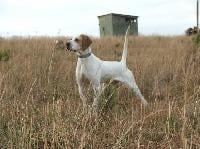Ring necked pheasant - Pheasant Hunting - Upland Hunting
View Recipes | Gamebird Services | Gamebird Hunts | View Photos

Description
The Ring-Necked Pheasant has a distinct long, pointed tail. This isnt the only thing that sets it apart from other pheasants and chicken-like birds. Another distinction is that while most pheasants live in forests in Asia, the Ring-Necked Pheasant can be found in many different areas, particularly North America. These game birds were brought to the continent from Asia in the 1880s, where they were introduced for in Oregon. They soon became popular for bird hunting and spread throughout much of the United States.
They live in open fields and are often found on road sides. They will take to the air when cars speed by from their hiding places in the brush.
Their omnivorous diet tends to include more insects in the summer and seeds in the winter. They eat both on the ground and in trees. They will often come to bird feeders so its not uncommon to find a flock in a popular backyard.
When they're in fields, they can often be hard to spot, though its easier in the winter when the vegetation is less dense. The males perform a mating ritual that can make them easier to spot. In the spring, watch for the pheasants calling out and flapping their wings in open areas.
During the breeding season this ritual is common. The ring-necked pheasant will often practice what is called harem-defense polygyny. When this happens, a male bird will protect a group of females and scare the other male birds away.
The male and female Ring-Necked Pheasant have very different coloring. While the female birds are shades of brown and blend in well in the fields they live in. The male pheasant has iridescent color plumage, often in golds, grays, orange, and copper tones. These birds will often be segregated in the winter, with small flocks of male pheasants and large female groupings.


















